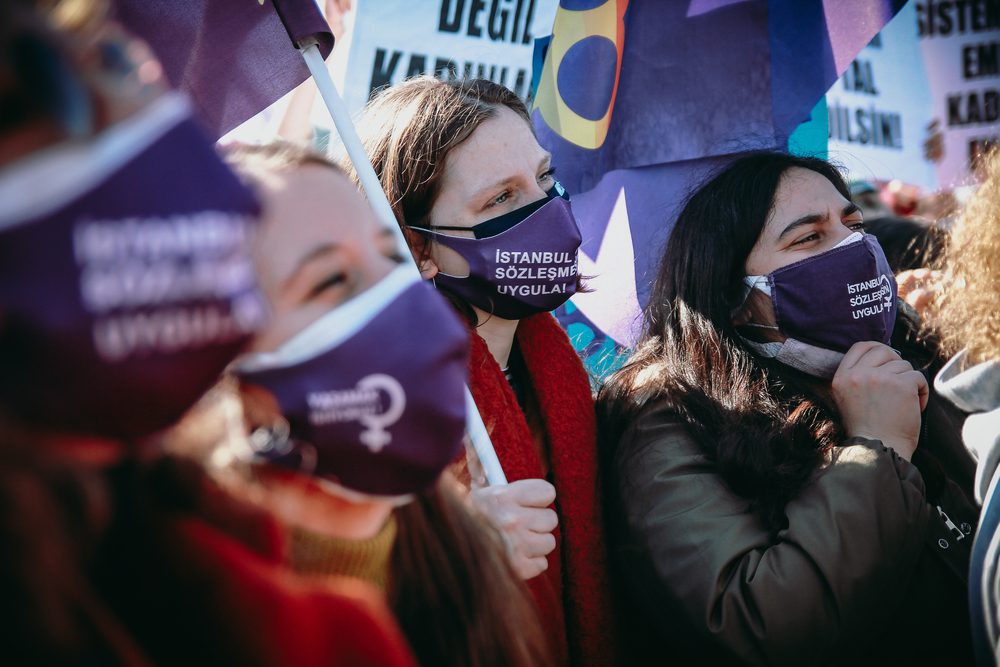
The EU Council has approved the bloc’s accession to the Istanbul Convention on violence against women.
The Council very quietly gave its approval at its June 1st meeting of transportation and energy ministers.
The Convention, with the full name of ‘Council of Europe Convention on Preventing and Combating Violence Against Women and Domestic Violence’, aims for no less than the elimination of violence against women.
An apparently straightforward issue has been mired in debate for years.
In every member state of the EU, violence against women—from rape on the street to abuse in the home—is a punishable criminal offense, and the elimination of violence against females is an aspirational goal. Nevertheless, though proposed by the Council of Europe and open for signatures since 2011, six EU member states have not yet ratified the Convention—Latvia, Lithuania, Bulgaria, Hungary, Slovakia, and the Czech Republic have to date withheld their support. Some member states found it unacceptable: the Bulgarian constitutional court found the treaty unconstitutional, and in Slovakia, the Convention was rejected by the National Council. Though Poland has ratified the treaty, the current government has spoken of withdrawing.
The controversy is twofold, rooted in both gender ideology and EU overreach.
On the gender ideology front, the Convention does not just consider violence against women a form of injustice but part of a wider, persistent problem of systemic discrimination against women in society. In other words, the Convention assumes that oppression of women is historically inherent in male-female relationships unless policies are enacted to rebalance them.
“Violence against women is a manifestation of historically unequal power relations between women and men, which have led to domination over, and discrimination against, women by men and to the prevention of the full advancement of women,” it states.
The next article is also problematic. It adds that women suffer violence at the hands of men because of “the structural nature of violence against women as gender-based violence, and that violence against women is one of the crucial social mechanisms by which women are forced into a subordinate position compared with men due to its definition of gender and its wide definition of gender violence.” The article purports that, simply speaking, chauvinism (rather than a matter of a few bad men or specific instances of unjust laws) is so ingrained in society that it can only be overcome through social engineering.
Spanish MEP Margarita de la Pisa Carrion (VOX) explained how the treaty might sound attractive on paper, but that it fails to live up to its promises. She clarified how the Convention actually translates into life and law in a recent interview with El Debate:
Let’s remember that it says that violence against women must be solved with the ideological perspective of gender, that is, understanding that it is a structural problem and one of heteropatriarchy, and when you try to solve a problem with this ideological vision, in the end you are making laws that are ideological.
In practice, for example, the Spanish gender violence law—enacted with the treaty as a basis—has led to a cascade of false accusations against men. In the attempt to rebalance the historic disadvantages of women, the law has gone too far, and men are assumed to be guilty until proven innocent. Ironically, even with the Convention in place, in Spain, the incidences of actual violence against women have not decreased.
The treaty also codifies additional aspects of gender ideology.
Gender is, in the treaty, “the socially constructed roles, behaviours, activities, and attributes that a given society considers appropriate for women and men,” and thereby the Convention’s protections embrace others who are not biological women.
At the same time, the treaty includes “sexual orientation” and “gender identity” as some of the characteristics that cannot be used as a basis for discrimination. It is the first such reference in international law, and secures the same legal protections for ‘transwomen’ as for women.
In countries such as Spain that have permitted legal gender changes even without cross-sex hormone treatments or sex reassignment surgery, this has been a point of contention, as women have found themselves unprotected against men who have legally changed their ‘gender identity.’ For many women, such definitions in feminist laws lead practically to erasing women.
It’s not difficult to see why more conservative countries have not acceded to the treaty, which touches on the second controversial point—national sovereignty versus EU overreach.
The push for EU accession coming from the Commission has found increasing support for overriding hesitant member states.
The EU Parliament voted in favour of the EU ratifying the treaty earlier in May, and in 2021 the EU Court of Justices had ruled that the Council only needs a qualified majority—and not unanimity—to decide for the bloc to join the Convention.
Accession to the treaty by the EU means that the Convention applies within the EU institutions and their competencies. Additionally, it applies to individual member states in aspects pertinent to the treaty where EU member states cooperate by virtue of EU membership—asylum, judicial cooperation in criminal matters, and the principle of non-refoulement. In these areas, European courts will have jurisdiction.
For those in favour of the treaty, its imposition is both a step to a federalised Europe, and one where gender identity—and gender perspectives—replace older, common sense notions of sex and the root causes of violence against women.
